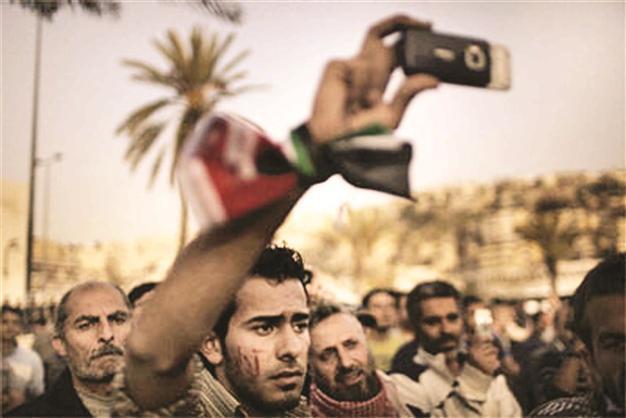YouTube joins activist world with Human Rights Channel
EMRAH GÜLER ANKARA - Hürriyet Daily News

While human rights violations and their under-reporting have always found coverage in social media, effective collective action and human rights projects are waiting to take off for more powerful impact.
Did you know that you can now watch human rights violations and under-reported human rights stories all around the world on a single channel? Maybe not a TV channel, but perhaps a more powerful, impartial and global source of videos. YouTube’s very own Human Rights Channel opened in late May with the slogan, “Film it. Share it. Change it.”With a single click, you can now watch the gruesome footage of a raid by Syrian security forces on Aleppo University’s dormitories that claimed four lives and its aftermath, or recent rallies in Cairo’s Tahrir Square, a man publicly whipped as punishment in Iran, or cousins burning themselves to protest Chinese rule in Tibet.
The channel asks people around the world to upload videos “to shed light on and contextualize under-reported stories, to record otherwise undocumented abuses, and to amplify previously unheard voices.” The all-too-important hashtag is #video4change.
To launch the channel, YouTube teamed up with WITNESS, a human rights organization that specializes in the use of video for human rights, and Storyful, a social newsgathering operation and video playlist creator. While YouTube serves as the home for the channel, WITNESS’s role is to ensure that the content remains balanced, while Storyful is responsible for sourcing and verifying the content.
Calling all citizens
Social media has had a great influence on the uprisings in the Arab world, WITNESS Program Director Sam Gregory and Olivia Ma, a YouTube news manager, said in a related YouTube blog.
“During the height of the activity, 100,000 videos were uploaded from Egypt, a 70 percent increase on the preceding three months. And we’ve seen it play out in specific, local cases with issues like police brutality, discrimination, elder abuse, gender-based violence, socio-economic justice, access to basic resources, and bullying,” they said.
The introductory piece in the blog on the channel promises that the content will be beyond protest footage, urging non-profit organizations working on human rights to curate videos for the Human Rights Channel. The first videos in the channel’s stream were on clashes in Cambodia over land rights, stories from U.N. observers in Syria, and Occupy Wall Street.
“We hope this project can not only be a catalyst to awareness, but offer people new avenues for action and impact,” said Gregory and Ma. “The channel is committed to providing new citizen creators as well as viewers with the tools and information necessary so that every citizen can become a more effective human rights defender.”
As one comment on the launch highlights, “YouTube is onto something very powerful with a Human Rights Channel. Countries that lack resources or press to tell their story will have the necessary resources to do so. You’ll be able to promote human rights violations, and even organize fundraisers for people who really need the help. Most of their videos will have no problem going viral.”
This is my decision
Turkey has its own share of globally publicized setbacks in human rights. And quite a big list, for that matter. It’s only natural to expect to run into a couple of videos on YouTube’s channel when you put in the word “Turkey,” what with the ongoing prosecution and incarceration of journalists, writers, and hundreds of Kurdish political activists, the use of excessive force by the police against demonstrators with little to no accountability, and the recent protests against the government’s call to outlaw abortion. But, at the moment, there is none among the 98 videos uploaded in the channel’s first couple of weeks.
Turkey is no stranger to social media. In fact, it has been among the top 10 countries in the last years in using the various tools of social media, from Facebook and Twitter to less popular ones like StumbleUpon, and those who shot to fame in the last year like Instagram and Pinterest.
While human rights violations and their under-reporting have always found coverage in social media, effective collective action and human rights projects are waiting to take off for more powerful impact. Last year’s Daphne Revolution, a cyber revolution hoping to fight sexist, racist and homophobic language in the media, died off after bringing together thousands through a successful campaign of collective tweeting and a petition.
Another impressive project was Nefretsoylemi.org. Initiated by the Hrant Dink Foundation, the website was a working model that keeps a close eye on media and campaigns for laws to stop hate crimes. The media watch on hate speech is yet to take gain the power of social media.
The news portal bianet recently launched a pro-choice campaign called “This is my decision” in which it asks people to send photos of themselves, creatively adding the words “This is my body, this is my decision,” or its variations depending on your sex. The popularity of the campaign seems to have rocketed in social media, as the photos have generated huge interest. Hopefully, the campaign manages to create some impact before heading into obscurity.
















